
18 minute read
LESSONS FOR AUSTRALIA
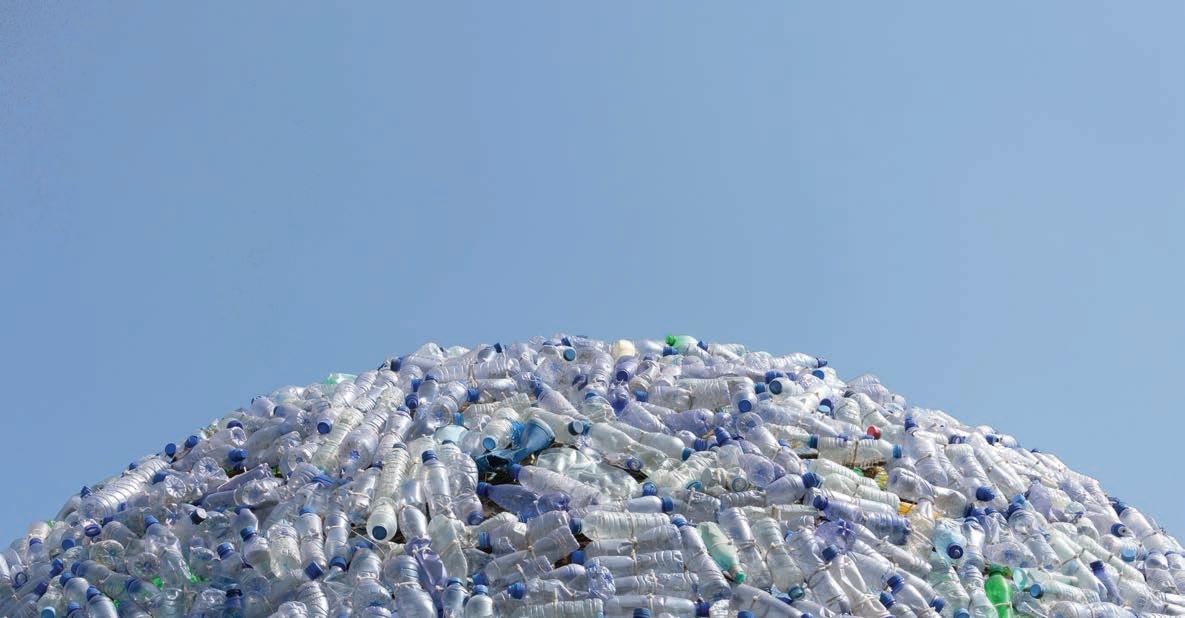
Plastic wars has lessons for Australia
AORA advocates that Australian governments urgently ban singleuse plastics that are not recyclable, reusable or compostable.
THE AUSTRALIAN ORGANICS RECYCLING ASSOCIATION BELIEVES THAT FOUR CORNERS’ RECENT PLASTICS WARS PROGRAM CONTAINS VALUABLE LESSONS FOR AUSTRALIA IN BETTER MANAGING ITS WASTE AND RECYCLING TASKS.
Plastic Wars, a PBS Frontline production, was featured on Four Corners in August and provided an overview of the “disastrous state” of reduction, reuse and recycling of plastics in the United States. The program illustrated how clever marketing campaigns were created to persuade consumers that they should carry the burden of plastic pollution by recycling, rather than expecting industry to reduce the
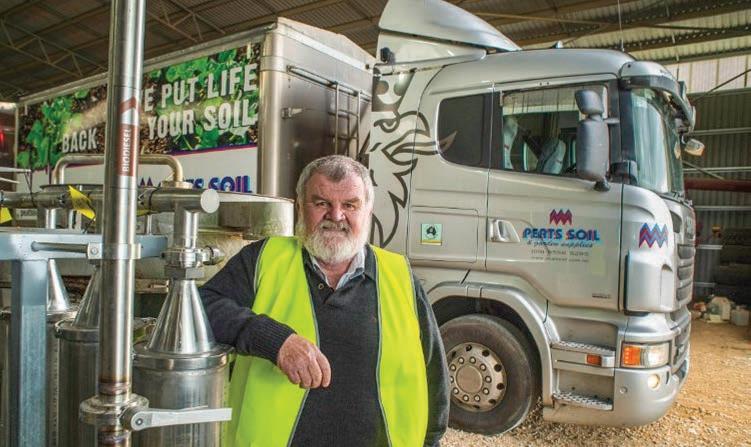
Peter Wadewitz says the circular economy works in organics recycling because it is the industrialisation of a natural process. amount of plastic it manufactured.
The program suggested that tactics brought in decades ago are still fooling consumers.
“At the bottom of all these plastic containers is this little chasing arrow – the little recycling symbol with a number…there are no kerbside programs that would accept any of these tubs,” an environmental scientist said on the program.
The Australian Organics Recycling Association (AORA), the national voice of the organics recycling industry, believes that the Four Corners program contains valuable lessons for Australia in better managing its waste and recycling tasks.
“Obviously, the story was specific to issues in the United States. However, it would be wrong to claim that there are no common issues between Australia and the United States,” Peter Wadewitz OAM, AORA National Chair, says.
“And a greater mistake not to pay heed to the lessons to be learnt from their errors.”
According to Wadewitz, the Australian recycling crisis following the China National Sword bans, and forthcoming COAG waste export bans, have brought home the challenges facing several Australian waste streams.
“In the midst of addressing the challenges in plastics and other streams, it must be remembered that there are parts of the Australian recycling industry which consistently deliver on their promises,” he says.
“The circular economy works best in organics recycling because it is the industrialisation of a natural process.
“Uniquely among recycling streams, the supply of the organics recycling industry’s products such as composts and mulches does not always meet demand.”
Wadewitz adds that most major organic recycling processing facilities are located within 90 minutes travel time from their largest input and end user markets.
“Both supply of feedstocks and demand for the industry’s products are domestic, and usually local,” he says.
“The organics recycling industry does not export its problems.”
AORA and the organics recycling industry are targeting a national organics recycling rate of 95 per cent by 2030, up from the current 51.5 per cent.
At that level, the industry would generate an additional $1.6 billion in supply chain opportunity, with an extra $612 million in industry value add towards the Australian economy.
This would deliver 4094 extra jobs paying $309 million in livelihood to Australians, Wadewitz says.
He adds that an extra 3.2 million tonnes of greenhouse gas emissions would be saved.
This is equivalent to 4.8 million trees planted or 742,000 cars taken off the road each year.
The biggest challenge in achieving these significant benefits is the contamination of organic feedstocks, usually by plastics.
For this reason, AORA advocates that Australia’s governments must urgently ban single-use plastics which are not recyclable, reusable or compostable, with exemptions for plastics used in medical and similar devices.
“Our industry’s products are needed for programs to meet state and national targets to reduce waste to landfill, mitigate the impacts of drought, retain water, improve soil quality, address soil salinity, improve agricultural productivity and to deliver the benefits of soil carbon capture,” Wadewitz says.
“These opportunities must not be lost with the current focus on other, more problematic recycling streams.”
vertical shredders. Built tough for the most demanding of shredding applications.
H E A V Y D U T Y V A L U E F O R M O N E Y C I R C U L A R E C O N O M Y
• Aggressive size reduction and densification of preshredded materials • Clean, high bulk density output for easy sorting and transportation • C&D waste, scrap metal and other heavy duty applications • Available with up to 440kW of power • Industry-proven and built tough for Australian conditions

Eyes on Canterbury-Bankstown
WASTE MANAGEMENT REVIEW SPEAKS WITH BRAD GRAY, CITY OF CANTERBURY-BANKSTOWN SUSTAINABLE FUTURE MANAGER, ABOUT THE COUNCIL’S INNOVATIVE EYES ON IT ANTI-DUMPING CAMPAIGN.
Canterbury-Bankstown council hope the Eyes On It campaign can help other areas facing similar illegal dumping issues.

Why did council decide to develop the Eyes On It Anti-Dumping campaign?
The Eyes On It Anti-Dumping campaign, which launched in 2019, was developed to combat illegal dumping through education rather than punishment. A survey of Canterbury-Bankstown residents found 90 per cent were concerned about illegal dumping and generally wanted a “clean and green’ city. Having a clean and green city also had a positive effect on our city’s health and economy.
How did your community respond to the campaign?
There was a fantastic response to the campaign. At the conclusion of 16 weeks, illegal dumping was reduced by 39 per cent and reports from the community on illegal dumps tripled to more than 2700 calls.
What actions did council engage in under the campaign?
Firstly, the campaign was driven by data. We gathered data on illegal dumps across Canterbury-Bankstown and looked at related demographic information. This allowed us to identify hot spots to target for educational materials. Like many councils, we offer free booked clean-ups, which people needed to know about. It also helped us realise the importance of translated materials for new migrant areas.
When we identified a dump, it was taped with warning tape and stickered to state it was illegal. Shockingly, 43 per cent of dumps were removed by the dumper themselves and we even received apologetic calls from people who didn’t realise it was illegal.
At the conclusion of the 16-week campaign illegal dumping was reduced by 39 per cent.
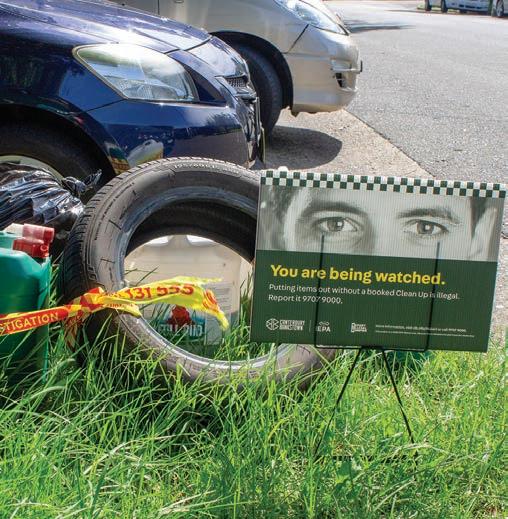
How has the campaign effected the issue of illegal dumping in Canterbury-Bankstown?
A total of 6686 illegal dumps were taped, reported and removed. At the end of the campaign, 3.5 million people were reached. People are more aware about illegal dumping and that was clear from the increase in reports we received.
How did council feel when the campaign was recognised at the NSW Local Government Excellence Awards?
We are pleased this campaign has been recognised across the state at the NSW Local Government Excellence Awards. We hope it can be useful to other areas facing similar issues.
What advice would you offer other local governments looking to address the issue of illegal dumping?
What made Eyes On It successful was its integrated campaign. That is, our media, waste operations and onground teams worked together to send a consistent and cohesive message: putting items on your kerb is illegal and you could be fined up to $4000.
What are council’s next steps to improve waste and resource recovery in the region?
We are constantly looking to educate residents in different and interesting ways. We’re exploring food waste bins to create a more waste conscious city and are even providing by-laws for apartment blocks struggling with illegal dumping inside private property.

Transfer Trailers
The Wastech ‘Clearline’ rolled wall body design provides greater durability and integral strength to withstand the high compaction forces from waste transfer station applications.
The Clearline Trailer is built to withstand the high piercing forces during compaction of industrial type wastes.
This Wastech designed trailer incorporates the use of high tensile steel plate in the body, reducing tare weight and increasing payload. Additionally, the seamless internal walls along with the hydraulic eject blade, safely and efficiently ejects the waste load at landfill.
Wastech have recently also developed their top load moving floor steel transfer trailer with increased payloads and performance.
Capacities from 57m³ up to 130m³ for Road Train capable prime movers
Tare weights from 11,100kg

Locally engineering and manufactured to suit specific customer requirements
Technical Specifications
Material High Tensile Steel (5mm floor, 4mm walls and roof) Rear Door Cyle Time 15 Secs. (Hydraulic Operation) Preferred Hydraulic Pump Size 80l / min
Working Pressure 2,100 PSI Cyclinder Type 5 & 6 Stage Telescopic Cylinder with Centre Support Eject Blade Cycle Time Eject: 140 secs. | Retract 150 secs. (5 Stage Cylinder - Single Trailer) Doors Top or Side Hinged Rear Doors (Hydraulic or Manual) Tare Weight From 11,100kg - Single Trailer (subject to options)
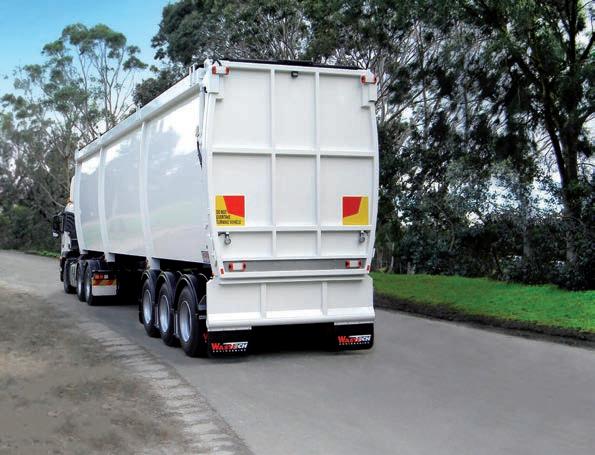
1800 465 465 www.wastech.com.au
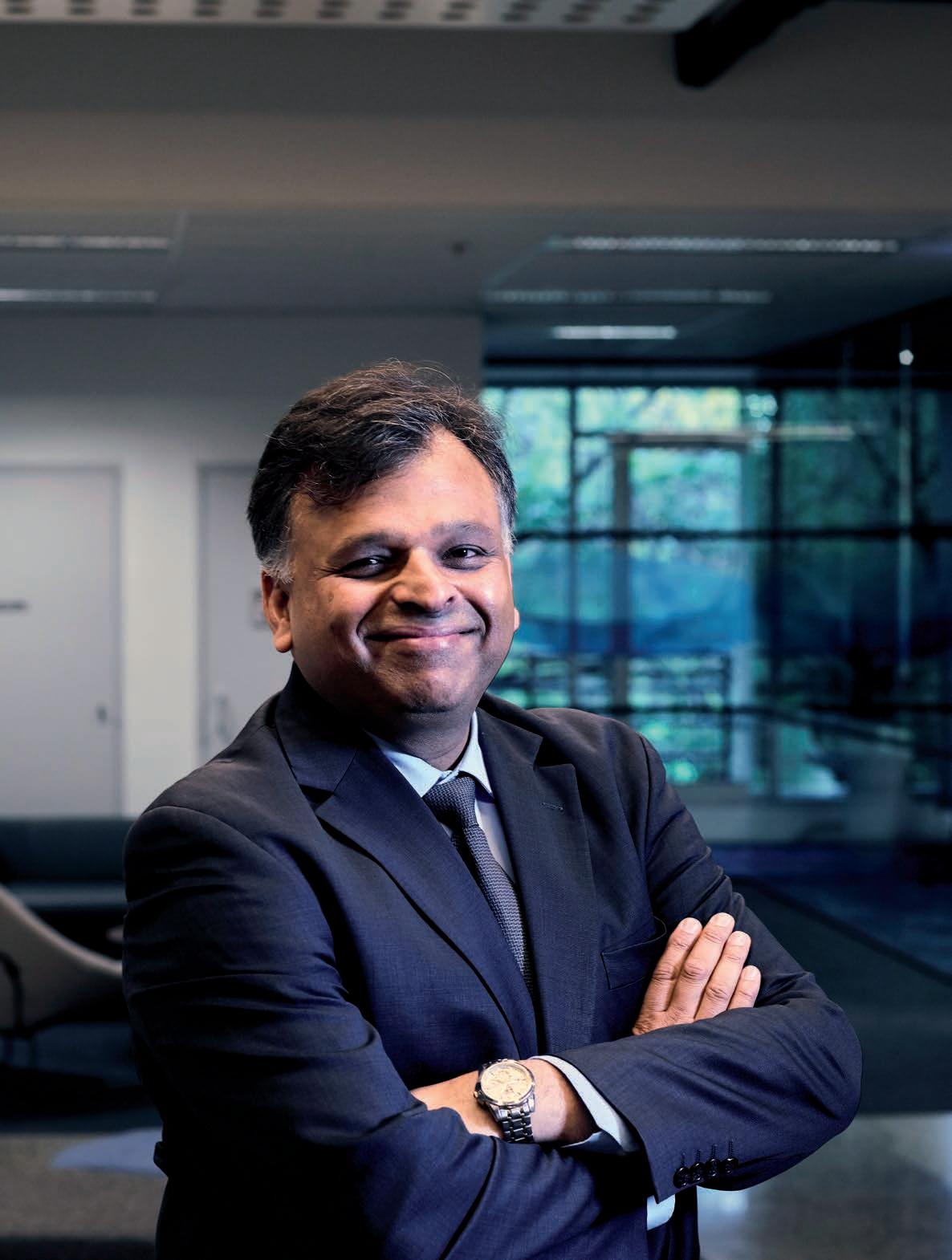
Keeping up Cleanaway’s reputation
FOLLOWING THE RELEASE OF CLEANAWAY’S EARNINGS, CEO VIK BANSAL SHARES HOW THE LEADING WASTE MANAGEMENT COMPANY GREW AND REMAINED RESILIENT THROUGH DELIVERING ITS 10-YEAR STRATEGIC PLAN.
Whether it’s our food production, waste collection or supply chain logistics, we need some things to continue – but they’ve got to do so safely,” Victorian Premier Daniel Andrews said in August, at the height of the state’s second wave of the coronavirus pandemic.
Many Australian businesses and industries have come to a halt, but as hospitals around the country have increased operations and PPE requirements, waste management has too been at the forefront of the epidemic as a vital service to enhance health and safety of all communities.
The waste and recycling industry has continued to provide critical waste services to the public. As Australia’s leading total waste management, industrial and environmental services provider, Cleanaway Waste Management (Cleanaway) has the responsibility to keep its people safe and employed while servicing its customers on the frontline.
Following the end of the 2020 financial year, Cleanaway released its full year results, which included earnings growth through operating leverage and cost discipline.
Through the company’s acquisitions, partnerships and ongoing sustainable objectives, investors and industry decision makers were eager to find out how the company continued financial growth in its services and how the current climate was reflected in both profit and achievements.
Chief Executive Officer and Managing Director of Cleanaway, Vik Bansal, is pleased with how the company has been able to deliver on its commitments whilst delivering a strong financial performance in the circumstances. He credits the Cleanaway Way – a strategy for the why, what and how – giving the company alignment across its business to focus on performance.
“Nothing that’s happened through COVID-19 has given us a reason to question our strategy. It continues to serve us well and has contributed to our success,” Bansal says.
“We benchmark ourselves against the leading global waste management companies and strive to be the company that sets the standard, which inevitably leads to a strengthened waste management sector.”
EARNINGS GROWTH DURING COVID-19
Cleanaway’s financial results for the year ending 30 June 2020 (FY20) saw a 8.7 per cent net profit rise to $152.9 million, due to an increase in its solids, liquid waste and health services.
The company announced its statutory profit after tax as $112.6 million, down 6.6 per cent on a year ago. However, its full year revenue increased 2.1 per cent to $2.3 billion.
The company comprises three operating segments – Solid Waste Services, Industrial and Waste Services and Liquid Waste and Health Services. Bansal stated in the full year results released on 26 August that Cleanaway’s financial results highlight the defensive characteristics of its revenue streams.
Solids Waste Services reported increased net revenue and earnings.
Excluding commodities, FY20 net revenue increased 2.4 per cent from $1.26 billion to $1.29 billion. The result reflects the impact of COVID-19 and lower commodity prices, which were partially offset by reduced rebates to customers. The introduction of a landfill levy in Queensland on 1 July 2019 resulted in reduced landfill volumes in the state, which were partially offset by higher collections and resource recovery volumes.
“Over the past year we strengthened our position as Australia’s leading integrated waste management business through our acquisition of most of the SKM Recycling Group’s resource recovery assets, and the successful integration of both those assets and the Toxfree business,” Bansal says.
“These acquisitions largely completed our Victorian and Tasmanian resource recovery footprints.”
The COVID-19 pandemic is undoubtedly generating tonnes of medical waste. There is a global shortage of PPE and the Federal Government is working with industry to increase local production of PPE in a sustainable manner. Due to heightened PPE requirements and increased disposal of medical waste from the health workforce, it was expected that Cleanaway’s Liquid Waste and Health Services would report earnings growth.
Liquid Waste and Health Services reported net revenue increased 3.8 per cent to $513.6 million, compared to FY19.
Vik Bansal CEO, Cleanaway
Cleanaway’s Health Services continue to grow, with the re-signing of some of its major customers for a further three to five years.
Cleanaway’s Industrial and Waste Services reported lower net revenue and earnings, with net revenue decreasing 8.3 per cent to $313.4 million.
Data from Roy Morgan showed that over 4.3 million people, nearly one third of Australians, have been ‘working from home’ during the last few months since the COVID-19 pandemic shut down large parts of the Australian economy.
While COVID-19 has created challenges, it has not changed Cleanaway’s strategy.
“We will continue to grow all segments of our business and look to improve both the quality and quantum of our earnings.
“This includes ensuring our capital is appropriately invested and delivering the returns that our shareholders expect,” Bansal says.
TREKKING TOWARDS FOOTPRINT 2025
Bansal says Cleanaway remains a leader in every waste stream in which it operates. However, he notes that being a leader comes with responsibility, and the company strives to maintain the highest standards and work towards its mission, “to make a sustainable future possible.”
“We’re excited about the potential of on-shore closed loop recycling solutions enabled by partnerships and some of the government incentives. Circular economies are growing and becoming more mature across a number of waste streams, and they represent a real opportunity for economic growth in Australia,” he says.
Bansal says the company’s objective is to drive a circular economy in Australia and it will pursue several key projects that are strategically important for the business.
In 2017, Bansal laid out Cleanaway’s Footprint 2025, a roadmap to ensuring Australia has the right infrastructure in place to support communities in managing their waste, while continuing to improve resource recovery.
“Our society will always produce waste in some form, and Footprint 2025 will continue to respond to those needs while extracting value from the various waste streams through our infrastructure, resulting in sustainable outcomes,” he says.
For example, Bansal says Cleanaway has proposed an Energy-from-Waste facility in Western Sydney to recover resource from residual waste, which otherwise goes to landfill.
“We’re also building a plastic recycling facility in Albury, which will turn used plastic bottles into new containers as part of a genuine circular economy.
“This is part of how we achieve our mission,” Bansal says.
Bansal says Cleanaway is looking forward to partnering with government, industry and the private sector to make a circular economy possible.
He notes that it’s important to include product stewardship in that plan and that there is a need for product manufacturers to participate in waste reduction and resource recovery strategies.
Cleanaway recently announced a joint venture with Pact and Asahi to build a $45 million PET plastic pelletising facility, Circular Plastics Australia, which will use plastic from recycled bottles to manufacture new drink containers for Asahi products.
He says harmonising standards and definitions across the sector are measures Cleanaway strongly supports to improve compliance and regulation.
“This would also enable national consumer education campaigns to improve community understanding of waste streams, thus reducing contamination and improving recycling rates,” Bansal says.
Trading conditions remain unpredictable for the foreseeable future due to COVID-19.
However, Bansal is confident in saying that Cleanaway is a market leader in every sector in which it operates, and its network of prized waste infrastructure assets across the country will continue to grow until the final footprint is cemented in 2025 and beyond.
For many, 2020 has been a year of uncharted territory – professionally, economically and socially. Yet despite its challenges, Australia has continued to deliver impressive gains on our journey to delivering the 2025 National Packaging Targets. Here is a snapshot of activity APCO and our wider community are delivering to build a circular economy for packaging in Australia.
Work is well underway on our program of FY21 Priority Projects – a series of dedicated projects co-designed with our community of working groups to address systemic challenges and drive action in the following key areas: reuse, recycling, recycled content, composting, singleuse and unnecessary and problematic plastic packaging phase out.
Some of the exciting initiatives we are looking forward to unveiling in the next twelve months include:
Progress to 2025 continues
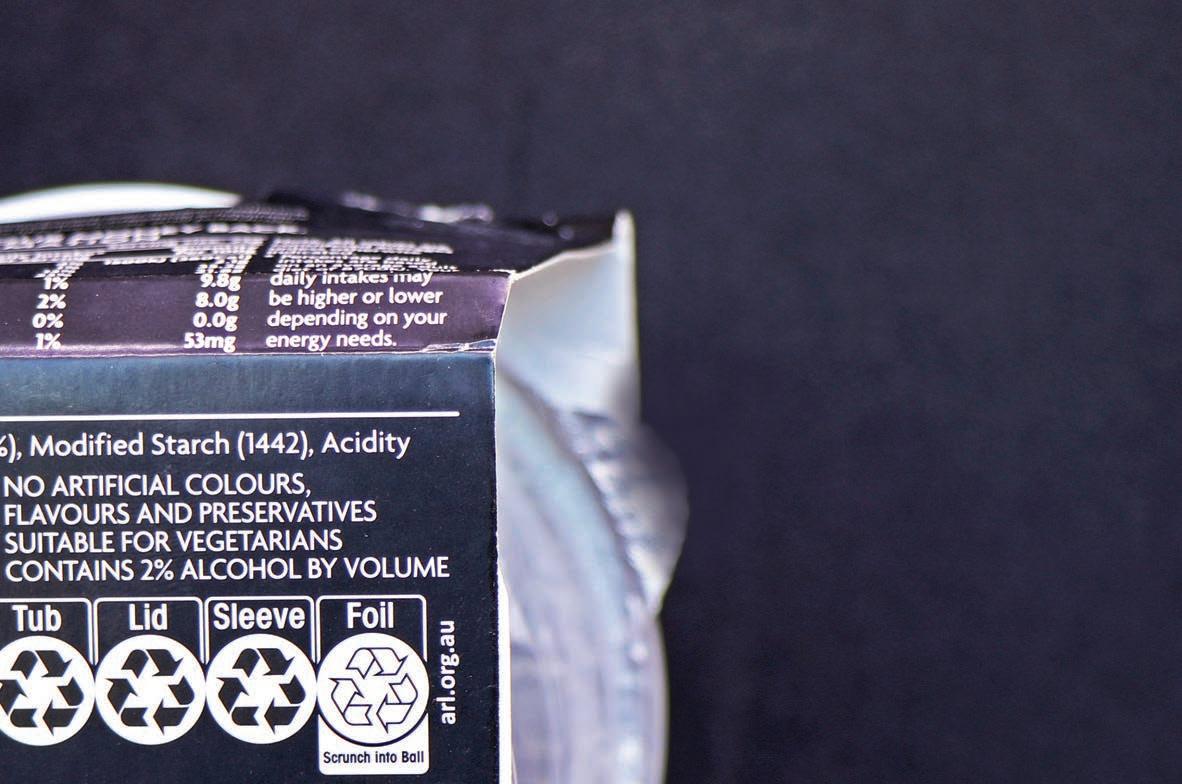
DESPITE THE CHALLENGES OF 2020, AUSTRALIA HAS CONTINUED TO DELIVER IMPRESSIVE GAINS ON ITS JOURNEY TO DELIVERING THE 2025 NATIONAL PACKAGING TARGETS, WRITES APCO CEO BROOKE DONNELLY.
• A reuse resource and case study analysis to support industry with the implementation of reuse systems. • A range of new industry best practice design guidelines covering soft plastic, rigid PP, rigid HDPE, fibre based packaging/PCPB and problematic small items. • A new project to build industry awareness, education and responsibility regarding the benefits and importance of B2B packaging recovery. • New research and projects to map and plan effective strategies to increase recovery or reduce the use of soft plastics. • The new Pledge Project, which calls on organisations from the packaging supply chain to publicly pledge the volumes of specific materials they will transition from virgin materials to recycled content. Internationally, pledge projects have proven to be an effective tool in demonstrating the powerful market potential for recycled content uptake. The European Commission’s 2019 Plastics Pledge is not only driving major investments in the industry, but is on track to triple the EU’s recovery of plastics within five years. The Pledge project is part of a series of projects addressing the recycled content issue – with other initiatives including recycled content traceability, verification, labelling, procurement and design guidelines.
It’s been two years since we launched the ARL program to our APCO members and the scheme has much to celebrate, with overwhelming support from both government and industry.
Over 470 Australian businesses have now adopted the program and a report developed by the Australian Council of Recycling in August found in their test sample nearly a quarter
of products contain the ARL - an incredible achievement within a short time frame.
This year the program was also recognised internationally as a worldleading consumer education initiative in a report from the UN Environment Programme, commended for its clarity, reliability and accessibility.
Looking ahead to 2021, we are excited to be rolling out the next iteration of the label – which will expand to encompass recycled content and reuse.
Training and education have continued to be a major focus for APCO in 2020. Through our training partner, the Australian Institute of Packaging, we delivered 25 training events in QLD, NSW, VIC, SA, WA, NZ and the Philippines during the 2019-2020 period, involving 885 participants. The sessions are designed to build industry understanding and capability around critical sustainable packaging topics and resources, including the 2025 Targets, the Sustainable Packaging Guidelines and the ARL Program.
Since lockdown started in March, APCO has hosted weekly webinars covering all things sustainable packaging. The popular sessions have brought together over 3500 attendees, and covered issues ranging from sustainable communications and investment, through to behaviour change and reporting. All session recordings are available on the APCO website.
In October, we are very excited to be launching a new creative campaign in partnership with Planet Ark to build awareness of the ARL and promote better recycling behaviours.
The ‘Check It, Before You Chuck It’ campaign will aim to improve recycling behaviours by encouraging all Australians to look for the ARL every time they are at the bin.
APCO CEO Brooke Donnelly
The launch is the first major focus of APCO’s National Consumer Education Campaign, a two-year program to promote better consumer awareness and behaviour relating to sustainable packaging. Alongside recycling, the campaign will seek to improve sustainable packaging awareness and behaviour in Australia by addressing six core topics: recycling, recycled content, reusable packaging, packaging reduction and avoidance, compostable packaging and the functional role of packaging,
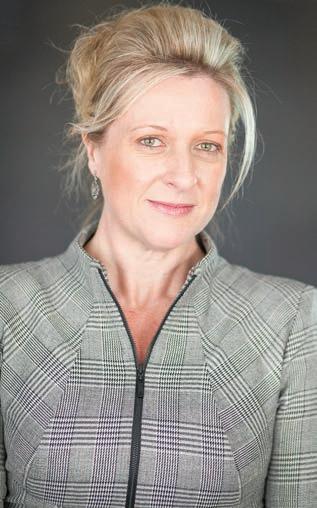
Brooke Donnelly says work is well underway on APCO’s program of FY21 Priority Projects. such as the relationship between packaging and food waste avoidance.
At the time of writing, APCO’s members are in the process of finalising their annual reporting process – a core requirement of the membership process.
With more than 1600 members tracking and assessing their packaging sustainability, the annual reporting tool is fundamental for keeping Australian industry transparent and accountable.
It’s also a critical data gathering exercise that allows us to build a systemic picture of packaging in Australia – and will form an important part of our annual Packaging Consumption and Resource Recovery Data report that will be published in Q4.
Finally, in November, we are looking forward to again celebrating (virtually) the industry high achievers that are leading the way in sustainable packaging design and innovation at the APCO annual awards. This year we are also very excited to launch three new categories. The new Our Packaging Future Awards will highlight innovation and leadership from members in areas of sustainable packaging education, improved collection and recycling systems, and end-market development.








